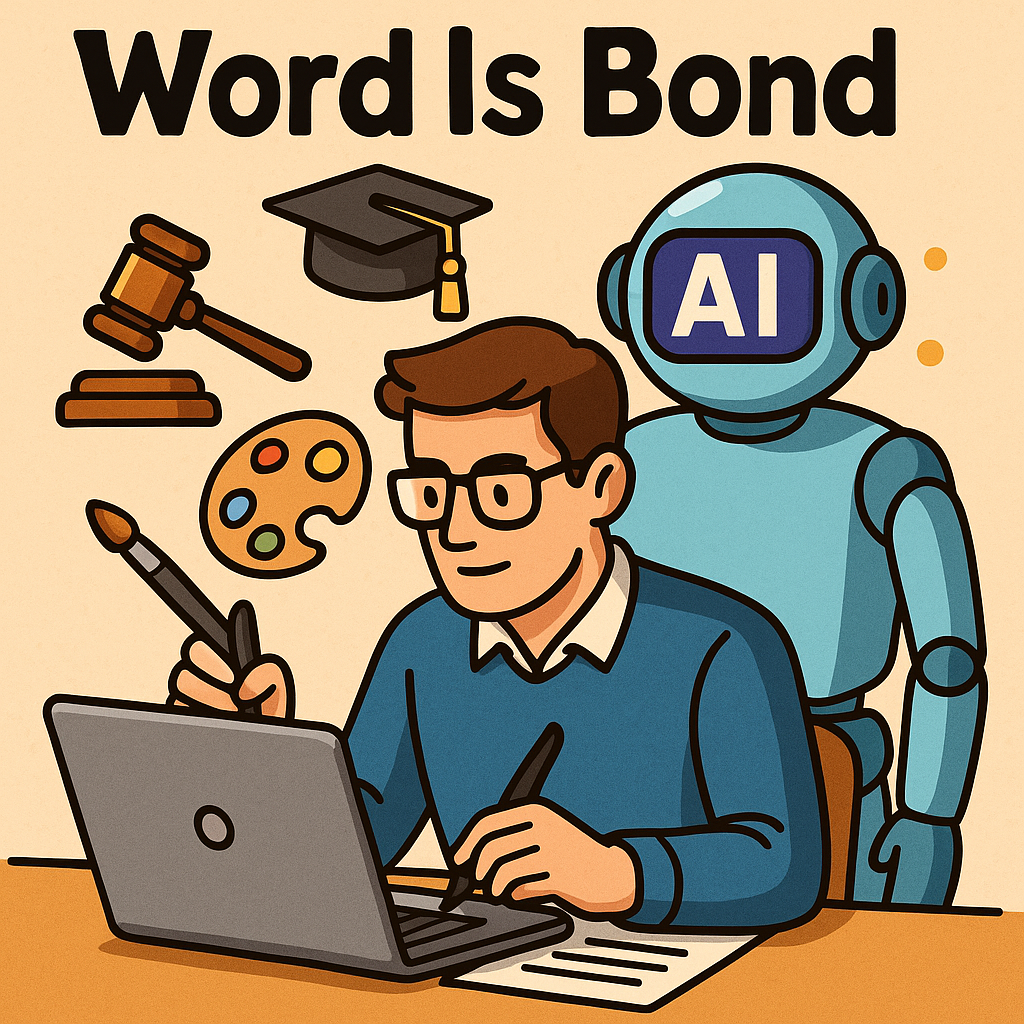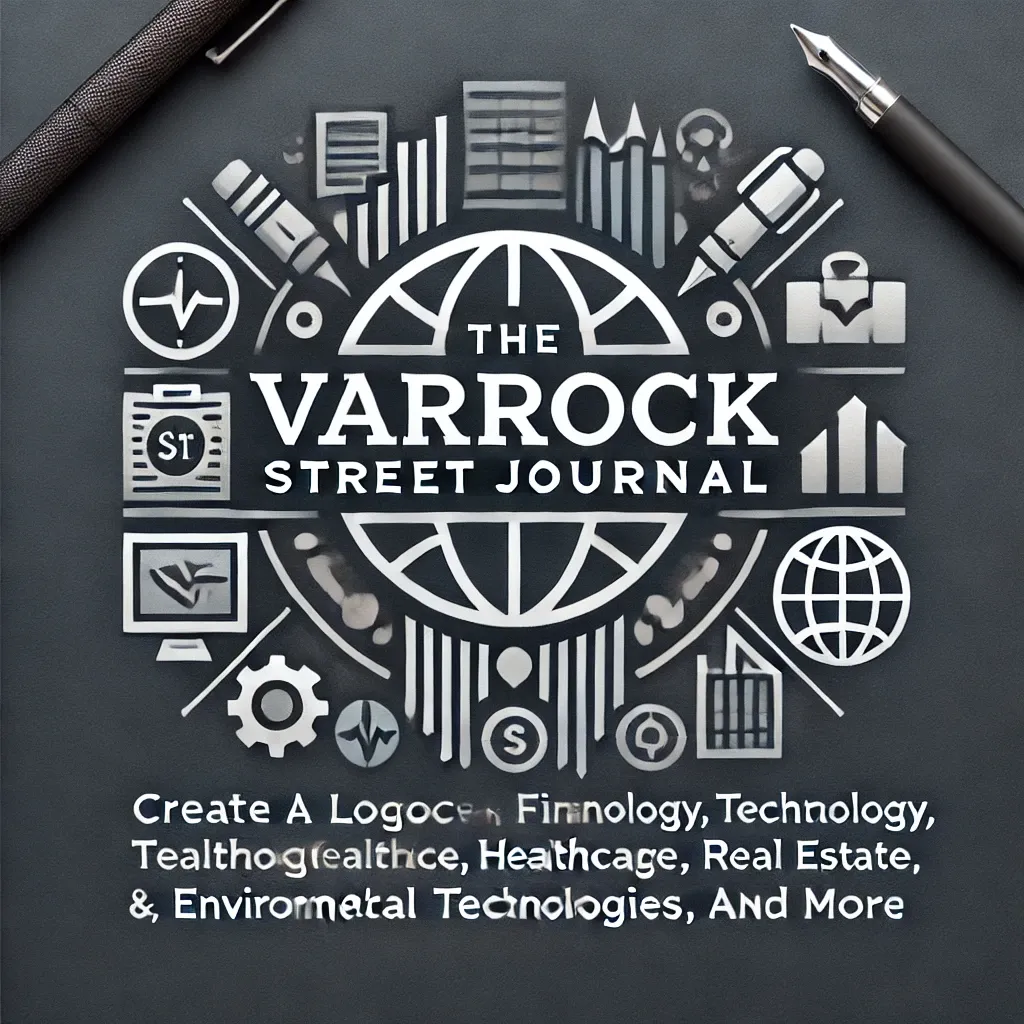Word Is Bond: Who’s Really Responsible for AI-Generated Work?

Technology and Engineering | The Varrock Street Journal
Good morning to all of our wonderful Varrock Street Community!
We have an exciting one for you today!
Today’s newsletter isn’t about breaking research or medical insight—it’s about a deeper question that affects every person using AI, especially in fields like law, education, and creative writing.
We’re taking a thoughtful look at the white paper titled “Word Is Bond,” which argues a bold but necessary claim: AI is not the author. You are. Whether it’s a lawyer using ChatGPT to draft an argument, a student shaping ideas into prose, or a poet exploring new language—the responsibility, creativity, and intent are always human.
Let’s dive into this thought-provoking discussion.

🧠 The Big Idea: AI Is a Tool, Not an Author
The author of the paper compares large language models (LLMs) like ChatGPT to calculators or chisels. These tools perform complex tasks, yes—but they do not create. They execute.
When a lawyer uses AI to generate a motion, it’s no different than using a legal template or referencing case law. When a student uses ChatGPT to refine a paragraph, they’re using a linguistic tool—not outsourcing their ideas.
Bottom line: AI doesn’t author anything. It is spoken through. The human using it is the one speaking.
⚖️ Legal Double Standards: Copyright vs. Malpractice
The white paper calls out a fascinating inconsistency:
- Courts have denied copyright protections to users of AI-generated works, saying the AI is the "author."
- But when an AI tool gives incorrect legal advice, it's the lawyer who gets sued—not the model.
This contradiction points to a legal system still wrestling with AI’s role. If AI can’t claim rights, then surely it can’t carry blame. That means full responsibility belongs to the user—in both failure and success.
🖋️ Academia and Authorship: What’s Fair?
Should students be punished for using AI tools to assist with writing? The paper argues: only if they don’t understand what they’re writing. If they do, and are using the tool to shape thought into language, they’re still the author.
Similarly, educators and researchers should be cautious not to equate AI usage with cheating—but instead ask, did this person understand what they produced?
Language is not just structure—it’s meaning, intention, and accountability.
💡 Words as Oaths: Philosophical and Theological Reflections
Perhaps the most striking section of the paper comes near the end, where the author draws from theology:
“If word is bond, then to write is to swear a kind of oath.”
Here, language becomes not just a vehicle, but an act of moral and existential creation. It’s a commitment. A promise. Something only a person can make with full awareness and depth.
AI doesn’t mourn, love, hope, or believe. It doesn’t speak with conviction. It doesn’t carry responsibility. That burden—and that honor—belongs to the human behind the screen.
🧠 Why This Matters
As AI continues to evolve and integrate into our daily lives, we’re all facing a critical choice:
Do we accept responsibility for what we produce with these tools—or do we shift the blame onto the machine?
Whether in law, education, art, or science, the answer must be clear: authorship follows intent. Responsibility follows use.
🌟 Spotlight on the Future
- Legal scholars are pushing for consistent standards on AI-generated content in courts
- Universities are updating academic integrity policies to reflect the nuance of tool usage
- Creators are learning to credit the human hand, even when assisted by artificial ones
- Philosophers and theologians are asking: What does it mean to speak, and who gets to claim a voice?
😲 Real Life Applications?
- Watch this video after you finish reading today's article and reflect on your stance and opinions on this matter.
🧠 Reflection Questions
- If you use AI to help you express your thoughts, are you still the author?
- How could academic settings use AI to improve education rather than replacing human creativity?
👋 Final Thoughts
This isn’t just a conversation about technology—it’s a conversation about responsibility, authorship, and truth. Whether you’re a lawyer, student, artist, or citizen, your words carry meaning—and meaning carries weight.
So write with intention. Speak with conviction. And remember: the word is yours. The bond is too.
📚 Reference
- “Word is Bond: Human Responsibility and the Use of Large Language Models in Law, Academia, and Art.” (2024). Patreon Discussion
📲 Join the discussion with us each week:
- Instagram: @thevarrockstreetjournal
- TikTok: @varrock.street.jo
